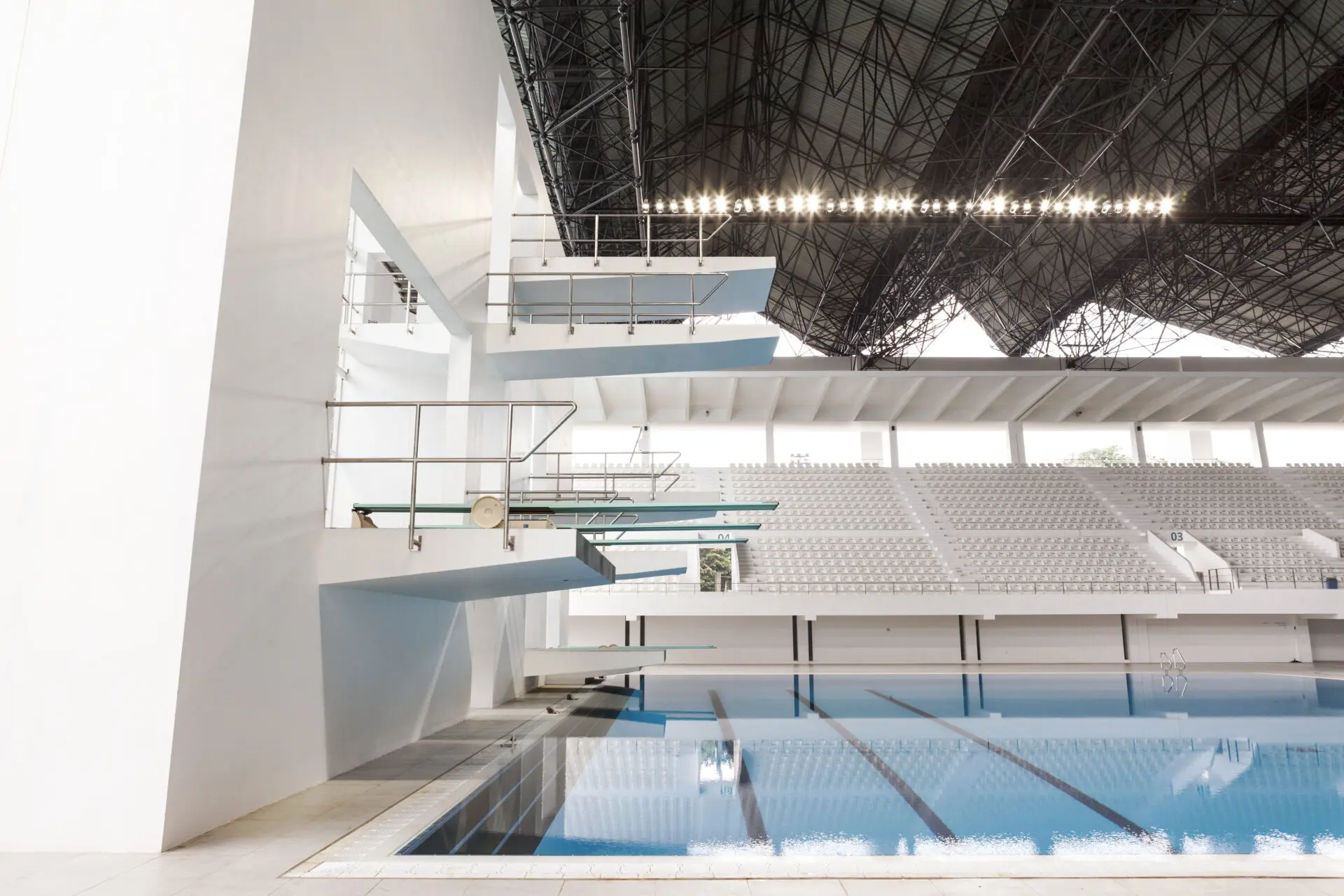At Fluidra we are specialised in the construction of diving pools, taking into account everything that is needed, as well as the requirements for sport competitions performed in them.
Dive deeper with the eBook
Diving pools are those specifically designed for the practice of diving and for swimming competitions relating to the modalities of springboard and platform diving.
The construction of diving pools follows the regulations and international standards of the World Aquatics federation (former FINA) through its Competition Regulations, also included within the corresponding national regulations such as the Royal Spanish Swimming Federation (RFEN), an institution that is also responsible for the approval of these facilities to organise official diving competitions.
The diving pools differ from the other pools in terms of location and infrastructure, and obviously also in terms of all the measures that must be respected within the official regulations for professional diving pools.
As for the location, while the diving pools may be included in an establishment with water facilities useful for recreation, physical education and training, when it comes to high competition diving pools, it is specified that they should preferably be included in indoor pools, given the continuity of use throughout the year regardless of weather conditions.
As far as infrastructure is concerned, the key differences of a diving pool are the springboard and platform, which in addition to being at a specific height, which is taken into account during its installation, they must also have the appropriate dimensions for the practice of diving whilst using them.
For the depth of the diving pools and general measurements of all their elements, in Fluidra we always rely on the indications of the Royal Spanish Swimming Federation, respecting the minimum units required and customising, if applicable, the construction of its elements according to the needs of each client.
When considering the dimensions of diving pools, we always respect the official indications regarding the following elements:
- Springboard measurements
- Diving platform measurements
- Dimensions of supporting structures
- Dimensions for diving installations
- Dimensions of the pool
- Measurements for beaches or platforms
- Construction of side walls
- Overflow and pool access dimensions
- Solar orientation of the diving pool
- Characteristics of the walls
- Facilities for judges
You can consult all these regulations in the World Aquatics Competition Regulations.

When building a diving pool, there are also other elements that we must look at to achieve a flawless design with professional results.
For example, water quality must be one of the priorities in this type of installation. We have to guarantee a temperature of around 26ºC and the divers must have a good visual perception of the surface of the water.
Before jumping, athletes warm up their muscles. However, as they fall, their bodies lose heat. Changes in temperature as they hit the surface of the water can be potentially damaging for muscles. A temperature of 26ºC guarantees that the pool water does not cause an uncontrollable impact on the athlete’s body.
For the latter, a surface water agitation device must be installed under the diving facilities called Sparger. These safety air systems are used for learning and training sessions. Air is released under high pressure from the bottom of the pool to create a large number of bubbles that form a cushion for jumpers. This minimizes the risk of injury and as a result, athletes will feel much more confident when jumping into the water.
It is important to maintain an optimal room air temperature not only in the diving pools, but in any indoor pool. Ideally, this temperature should always be between 2ºC and 3ºC above the pool’s water temperature. The maximum recommended is 28ºC.
We must also guarantee a relative humidity of 55% to 70%, based on the sport and leisure facility regulation (NIDE) swimming standard.
Another decisive factor in a carefully designed diving pool is the lighting.
Regardless of the natural light enjoyed by the pool, uniform artificial lighting must be guaranteed, which does not hinder the vision of athletes, judges and spectators. For example, it should not cause reflections on the surface of the water.
To do this we must comply with the UNE-EN 12193 standard on ‘lighting of sports installations’. In addition, to allow for audio-visual broadcasting and recording, a vertical illuminance of at least 800 lux is required.
Finally, if the diving pool is to be used for official sporting competitions such as Olympic Games, world, continental or national competitions, automatic result recording equipment must be installed, based on the regulations of the Royal Spanish Swimming Federation and the International Swimming Federation.
